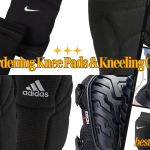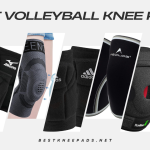Sports activities play a vital role in the physical, mental, and social development of adolescents. However, it is equally important to educate young athletes about the potential risks and safety precautions associated with sports participation. By teaching adolescents about sports safety, we can equip them with the knowledge and skills necessary to reduce the risk of injuries and create a safer playing environment.
Whether playing on a school team or engaging in recreational sports, adolescents should be aware of the specific safety considerations relevant to their sport. Understanding the risks and common injuries associated with their activities, as well as proper conditioning and warm-up techniques, can help prevent injuries and ensure the enjoyment of sports for years to come.
In this article, we will explore the best practices for teaching adolescents about sports safety, including important considerations and tips for promoting safe play.
Key Takeaways:
- Teaching adolescents about sports safety is essential for their well-being and overall enjoyment of sports activities.
- Understanding the risks, proper warm-up and conditioning techniques, and appropriate protective gear can help prevent sports-related injuries.
- Sportsmanship and respect for rules play a crucial role in preventing unnecessary injuries.
Understanding the Risks and Common Injuries in Sports
Participation in sports comes with risks, and it’s essential for adolescents to understand these potential dangers to prevent injuries. While sports participation can build character and foster teamwork, several risks exist, including various injuries that young athletes can face.
The most common sports injuries for adolescents include sprains, strains, fractures, dislocations, and concussions. Sprains and strains occur when a joint is twisted or stretched too far, whereas fractures result from a direct blow or excessive force on a bone. Dislocations occur when a bone is forced out of its joint, and concussions happen when there’s a blow to the head or body that causes the brain to move inside the skull.
Recognizing these risks is crucial for young athletes. With this knowledge, proper precautions can be taken to mitigate the likelihood of injuries and ensure their safety.
Preventing Common Sports Injuries
Adolescents can prevent common sports injuries by taking precautions like wearing appropriate protective gear and equipment, warming up before physical activity, and following proper conditioning techniques.
Protective gear, such as helmets, mouthguards, and pads, can reduce the chances of sustaining severe injuries, especially in high-contact sports like football or hockey. Warming up before physical activity is equally important, as it increases blood flow to the muscles and reduces the likelihood of strains or sprains. Proper conditioning techniques, like strength and flexibility exercises, can also help athletes build endurance to prevent fatigue-related injuries.
By understanding the risks and taking proper precautions, young athletes can enjoy the physical and mental benefits of sports participation while minimizing their chances of injury.
Proper Warm-Up and Conditioning Techniques for Adolescents
For adolescents engaging in sports activities, proper warm-up and conditioning techniques are crucial for preventing injuries and ensuring optimal performance. Young athletes should understand the benefits of a thorough warm-up routine and follow appropriate conditioning exercises to enhance strength, flexibility, and endurance.
An effective warm-up routine should consist of dynamic stretching exercises that mimic the movements required in the sport. This can include jogging, jumping jacks, lunges, and high knees. Adolescents should aim to warm up for at least 10 minutes before engaging in any physical activity.
In addition to warm-up techniques, adolescents should incorporate conditioning exercises into their training regimen to build strength and endurance. This can include bodyweight exercises such as push-ups, squats, and planks, as well as cardio exercises like running, cycling, or swimming. It’s essential to gradually increase the intensity of conditioning exercises to avoid overexertion or injury.
It’s important to note that specific conditioning techniques may vary depending on the sport, and adolescents should consult with their coaches or trainers for guidance on appropriate exercises. By prioritizing proper warm-up and conditioning techniques, adolescents can reduce the risk of sports-related injuries and enhance their overall performance in sports activities.
Ensuring Proper Protective Gear and Equipment
One crucial aspect of sports safety for adolescents is ensuring they have the appropriate protective gear and equipment.
Each sport has its specific safety gear requirements. For example, football players need helmets, mouthguards, and shoulder pads, while soccer players need shin guards. It is vital to ensure that the protective gear fits correctly to ensure maximum effectiveness.
Avoid using hand-me-downs or second-hand protective gear and equipment. This practice can lead to improper fitting or missing parts, making them less effective in providing adequate protection.
Although investing in proper protective gear can be costly, it is essential to prioritize safety. The right gear can prevent severe injuries that may incur substantial medical expenses.
Remember: Appropriate protective gear and equipment can make a significant difference in preventing injuries and promoting safety.
Sportsmanship and Respect for Rules
In addition to understanding the physical risks associated with sports participation, adolescents should also be taught about the importance of sportsmanship and respecting the rules of the game. Good sportsmanship involves demonstrating respect for opponents, officials, and teammates and upholding the values of fair play and ethical behavior.
When young athletes display sportsmanship, they not only enhance their own personal development but also contribute to creating a safer and more enjoyable sporting environment for everyone involved.
Respecting the rules is also crucial for preventing injuries. Rules are put in place to promote safety and fairness, and failing to adhere to them can increase the likelihood of accidents and injuries. Additionally, violating rules such as illegal tackles or hits can cause harm to both the offending and victim players.
It is crucial that young athletes understand the importance of sportsmanship and respecting the rules of the game. Coaches and parents can play a significant role in promoting these values by modeling them themselves and holding their players accountable for upholding them.
Conclusion
Teaching adolescents about sports safety is essential to ensure their well-being and enjoyment of sports activities. By understanding the risks associated with sports participation, young athletes can better prepare themselves and take necessary precautions to prevent injuries. Proper warm-up and conditioning techniques are vital to enhance strength, flexibility, and endurance, which, in turn, reduces the risk of sports-related injuries.
Using appropriate protective gear and equipment during sports activities is crucial to minimize the chances of sustaining severe injuries. Essential safety equipment should be worn for various sports, and adolescents should ensure that they have the right gear that fits correctly. It is equally important to prioritize the use of protective gear.
Promoting a culture of respect and adherence to rules is pivotal to preventing unnecessary injuries. By prioritizing sportsmanship, good conduct, and ethical behavior, young athletes can create a safer environment for themselves and their teammates.
Empower Young Athletes
The knowledge and prevention tips gained through sports safety education will empower young athletes to make informed decisions and prioritize their safety in sports. By implementing these safety measures, adolescents can reduce the likelihood of injuries and ensure a secure play environment.
Therefore, it is essential that parents, coaches, and teachers take the responsibility to educate adolescents about sports safety. By doing so, they can ensure that young athletes have fun and enjoy their sports activities in a safe and secure manner.










